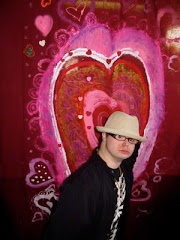- In preparation of this activity have cardboard cut in strips of sufficient length and height (6-8 inches high and 18-20 inches long) to extend mask headdress, have warm water in bowls at each station for soaking the plaster, cut various sizes of cast plaster that will form the basis of the mask.
- Have a stock of cast plaster strips separate from those being used at each station to avoid getting them damp during the activity.
- Cover the body with a protective garbage bag so clothes don’t get dirty, cut holes in the bag for head and arms.
- Cover the head with a shower cap making sure to tuck all hair underneath the cap. Cap can be tightened by tying a knot in the elastic if required.
- If the mask extends up and over the forehead wrap the forehead in a canvas or cardboard, which will act as a backing for the mask.
- Cover facial hear with a generous amount of petroleum jelly to stop the hair from sticking to the plaster.
- Apply a lighter covering of petroleum jelly to the skin, which will be covered by the plaster.
- Once the subject is ready and using the mask photo as a guide, begin by dipping the plaster in the warm water, shaking off excess water and squeeze between fingers to wring out before applying the plaster to the subject’s face.
- Since the plaster will dry rapidly in contact with the skin it is necessary to proceed quickly building up the mask on the subject’s face.
- Take care around the eyes, nose and mouth so the subject’s breathing in not impaired and no dirt is put in the eyes. Around the edge of the mask and openings (eyes, nose and mouth) the plaster strips are doubled over lengthwise to increase the strength of the mask and make it more intact for later work.
- Continue applying plaster strips as needed to build up a base mask that will later be used to create a mask similar to the one in the photo.
- The process should take between 15 and 20 minutes to complete.
- Once the mask dries it will start to peel away from the skin, wait for a few minutes to ensure it is structurally sound then remove and place on table to dry.
- With damp cloth or paper towels begin cleaning the subject’s face around the eyes, nose and mouth. Be sure to always start near the eye and wipe away to be sure not to get dirt in the eyes. Discard these towels right away.
Tuesday, February 12, 2008
Mask Making Instructions
MUST be under the supervision of an adult:
Subscribe to:
Post Comments (Atom)











No comments:
Post a Comment